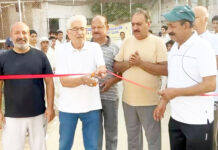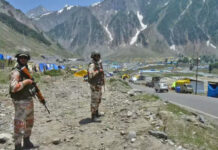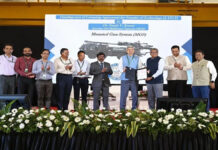Jammu and Kashmir, often described as the “crown of India,” is a region rich in cultural heritage, history, and tradition. From its majestic landscapes to its historical monuments, every corner of this region tells a story. However, the sad reality is that many of these monuments, which are symbols of our glorious past, are in a state of neglect and disrepair. It is imperative that immediate measures are taken to preserve these heritage sites, not just for tourism but as a responsibility to our future generations. The Jammu region, in particular, is home to several monuments that reflect its royal and architectural legacy. The Mubarak Mandi Palace, once the seat of the Dogra rulers, is a magnificent structure that stands as a testimony to the grandeur of the Dogra dynasty. Despite its architectural beauty, the palace complex has been slowly decaying due to lack of proper maintenance. A part of the palace houses the Dogra Art Museum, which preserves invaluable artifacts, miniature paintings, and manuscripts, but even this section requires attention to ensure the artifacts are not lost to time. Another notable heritage site is the Raghunath Temple, one of the largest temple complexes in North India. Built in the 19th century by Maharaja Gulab Singh, this temple complex reflects the spiritual heritage of Jammu. While it continues to attract devotees, the surrounding area and its infrastructure need a facelift to restore the glory it once had. Similarly, the Bahu Fort, which houses the revered temple of Goddess Kali, known as Bawe Wali Mata, is another historical site that holds cultural significance for the people of Jammu. Yet, it struggles with issues of conservation and visitor management. Preserving these monuments is not just about maintaining the physical structures but also about keeping alive the cultural ethos and historical identity of Jammu & Kashmir. The decline of these sites can be attributed to multiple factors, including urbanization, lack of funds, and inadequate awareness among the local population. While there have been efforts by the government to promote heritage tourism, a more structured and sustained approach is required. Public-private partnerships could play a vital role in this endeavor. Corporates and local businesses can contribute through Corporate Social Responsibility (CSR) initiatives, while local communities can be engaged in awareness campaigns to educate people about the importance of preserving heritage. Additionally, international collaborations can bring in the expertise needed for the restoration and conservation of these sites. The need of the hour is a comprehensive plan that ensures regular maintenance, strict regulation against illegal encroachments, and promotion of these heritage sites on a global platform. By preserving these monuments, we not only protect our past but also create a source of pride and inspiration for future generations. The heritage of Jammu & Kashmir is a treasure that belongs to all of humanity, and we must act now before it is too late. Let us come together to safeguard the heritage monuments of this region and ensure that the stories, traditions, and architectural marvels they hold are preserved for the world to see and cherish.

Dogra Herald is the media of J & K, breaking language and geographical barriers, connecting J & K to the rest of India.
0191 245 4946
info@dograherald.com
Latest articles
India Reports 8,309 New Infections, 236 Fatalities
iamjkstarr - 0
New Delhi : India reports a single-day rise of 8,309 new infections & 236 fatalities in last 24 hours.
NC gives ‘calling attention’ notice, raises security forces deployment issue during zero hour in Lok Sabha
iamjkstarr - 0
JKNC MP Hasnain Masoodi on Monday gave notice under Rule 197 of the Rules of Procedure and Conduct of Business of his intention to...
CRPF celebrates 82nd Raising Day with zeal
iamjkstarr - 0
CRPF celebrated its 82nd Raising Day with full zeal and following all social distancing norms and protocol at Group Centre (GC) CRPF, Bantalab, Jammu....





























